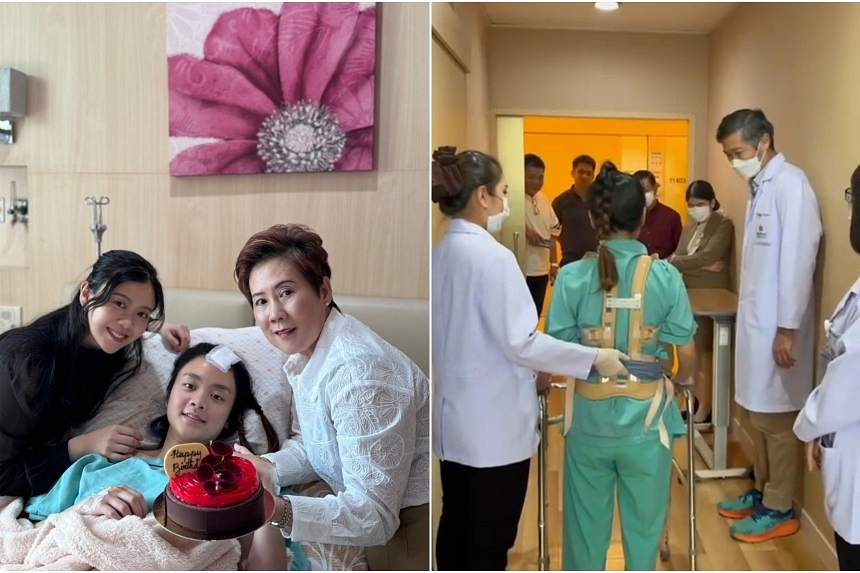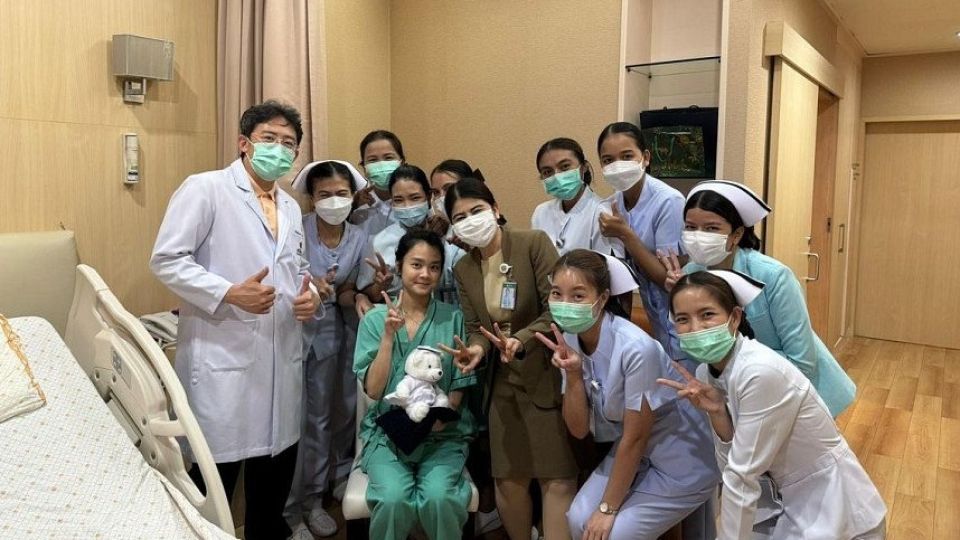November 29, 2024
SINGAPORE – For more than 10 weeks, she was bedridden in a Bangkok hospital, her spine fractured.
She was lucky to escape paralysis, her doctors told her.
Today, Malaysian undergraduate Hong Mun Ying, who was a passenger on the turbulence-hit SQ321 flight in May, is back home in Malaysia and slowly but surely on the road to recovery.
Getting on the flight out of Bangkok in August was tough. She was filled with anxiety, amid intermittent flashbacks of the incident that led to her fracturing her spine.
Ms Hong had been aboard the ill-fated Singapore Airlines (SIA) flight that was scheduled to fly from London to Singapore on May 21 but was diverted to Bangkok after it encountered extreme turbulence over the Irrawaddy Basin in Myanmar.
The incident, which caused the plane to plummet 178 feet in 4.6 seconds, led to one passenger dying of a suspected heart attack and dozens of others injured.
Ms Hong was one of those seriously injured, fracturing the fifth and sixth thoracic vertebrae in her spine. She also struck her head on the overhead luggage compartment and needed stitches on her scalp. The 23-year-old spent over 10 weeks recovering in Bangkok’s Samitivej Srinakarin Hospital and was one of the last few passengers on that flight to be discharged.
After her discharge, she had to psych herself up to brave the two-hour flight home to Malaysia. Despite suffering panic attacks whenever loud noises or sudden movements made her relive the trauma she suffered on board SQ321, her accompanying boyfriend and a nurse from the hospital assuaged her sufficiently to board the Thai Airways plane in a back brace.
She was also armed with self-calming techniques she learnt from hospital psychiatrists, like thinking about comforting memories with her family or hugging herself.
Today, she is simply grateful, to the hospital staff who cared for her through her surgery and recovery, and for surviving the incident.
“The doctor (in Samitivej) said I escaped more serious injuries and even paralysis if a different part of my spine was fractured,” Ms Hong told The Straits Times over the phone from Subang, Selangor, where she lives with her parents. “Initially, I was completely distraught. But after some time, I could reflect and feel very lucky for surviving (the ordeal).”
The events on SQ321 that led to her injuries all happened in a matter of seconds, Ms Hong said. Having briefly unbuckled her seatbelt in her aisle seat to allow a neighbouring passenger to go to the toilet, she waited to be served her meal.
The aroma of the breakfast omelettes was one of the last things she could recall before the plane dipped abruptly, causing her to hit her head on the luggage compartment, before falling back to the ground amid darkness in the plane and passengers screaming. She landed on one of the plane’s aisles.
Ms Hong remained conscious while managing her breathing difficulties laying on the plane’s floor as it headed to Bangkok, not knowing she had fractured her spine. All she knew was that she was in excruciating pain and kept still for fear of worsening her injuries.

Ms Hong Mun Ying being stretchered off the SQ321 aircraft upon arriving in Bangkok. PHOTO: COURTESY OF HONG MUN YING/THE STRAITS TIMES
She could not sit or even lie on her side to throw up, but was also conscious of keeping still to avoid worsening her injury.
“I really wanted to live,” Ms Hong said, recalling her inner monologue as she remained on the ground for the rest of the two-hour journey to Thailand.
Her situation was made more bearable by a Singaporean passenger she identified only as “Chris” who cared for her, covering a shivering Ms Hong with blankets and stabilising her when the plane moved.
Chris also helped to text her sister, Mun Wei, once they landed in Bangkok’s Suvarnabhumi Airport, to inform her of the situation and send her photos of Mun Ying’s condition.
In Bangkok, corrective titanium plates were bolted onto her spine and doctors in Samitivej set her on a six-month course for recovery.

X-rays showing Ms Hong Mun Ying’s fractured spine (left) and her spine after surgery in Thailand (right). PHOTOS: COURTESY OF HONG MUN YING/THE STRAITS TIMES
After taking about a month before she could sit up in bed, and another month to stand and take her first steps, Ms Hong can now walk without assistance, but requires help from her mother to clean herself.
She also needs assistance carrying objects as heavy as a laptop or opening sliding glass doors, but is keen to make enough progress to be ready to return to university in September 2025.
Responding to queries from The Straits Times, SIA said it is committed to providing all necessary support and assistance to passengers who were on board SQ321 in May.
The airline had provided $1,000 to each passenger, on top of covering the medical expenses of those injured. It also bore the cost of flights for the passengers’ family members and loved ones to Bangkok where requested, including their local expenses.
Customer care representatives were also assigned to each passenger for support, SIA added.
On June 10, SIA sent compensation offers to each passenger, with discussions conducted directly with the affected passengers or their representatives, the airline said, adding that details will be kept confidential.
Then, it was reported that SIA said it offered US$25,000 (S$33,500) as an advance payment for SQ321 passengers who suffered serious injuries requiring long-term medical care.
Ms Hong’s Manchester-based sister and boyfriend joined her in Bangkok from Britain, while her parents flew in from Malaysia, taking turns for the “night shift” as the bedridden Ms Hong was reliant on her caregivers to keep her warm through the chilly nights in her hospital ward or when she had to answer nature’s call.
“Recovery can be frustrating, even though I do not like to admit it sometimes,” she said. “I had plans for finishing studies and my career, now they must be put on hold.”
Ms Hong was meant to complete her third year at Coventry University, where she is reading nutrition and health, but has taken a gap year to focus on recovering.

Ms Hong Mun Ying (lying down and in back brace) with her sister, Ms Hong Mun Wei (in black) and her mother, Ms Gan Bee Sin, at the Bangkok hospital. PHOTOS: COURTESY OF HONG MUN YING/THE STRAITS TIMES
And while she makes baby steps, at times literally, towards regaining control of her movements, she suffers from anxiety and mood disorders as a result of post-traumatic stress disorder.
Triggering events include taking lifts or elevators, journeys on some pothole-ridden roads and even loud noises from fireworks, as she discovered during October’s Deepavali celebrations in Malaysia. She also has had to drop video calls with her sister when the phone screens become unstable or flicker.
Staying in the same position for prolonged periods and cooler, rainy weather also provoke sharp pain in parts of her body.
Whilst impatient over her life being temporarily derailed, Ms Hong is learning to spot silver linings even as she attempts to distract herself from the fact that she is not as mobile as she was before.
She relished spending an extended period of time with her family and boyfriend, who has been ferrying her to hospital check-ups and weekly physiotherapy sessions. To protect her spine, she travels in a back brace and drivers drive slowly, especially through bumpy, pothole-strewn roads.
When binging on Korean dramas was not enough, she also began putting up self-narrated videos on social media, partly to occupy herself, but also as reminders of that harrowing flight and her resilience.
“As I grow through this experience, these videos will remind me of what I have been through and how I became stronger through it,” she said, confident that she will regain her strides.

